Markets
When designing a humanitarian intervention and deciding whether to use CVA, a market analysis should be part of the overall response analysis. Supporting markets to function well has been shown to lead to faster recovery and increased resilience in disaster affected areas.
Many organizations have invested in the development of tools to support market analysis and are considering market-based programming more holistically. This includes interventions that use the market (such as cash transfers to affected populations), as well as interventions that directly support markets (such as conditional grants to traders to get their market back up and running).
Related initiatives
Featured content

Introduction to Market Analysis
Course
This 30 minute online course provides an introduction to the analysis of markets in emergency contexts, with input from some of the world’s leading thinkers on the topic.

A Practical Guide to Market Analysis in Humanitarian response
Course
A three to four hour online course designed to provide future humanitarian market assessment team members with a solid understanding of theory and steps of market assessments so that they can join assessment teams prepared with a basic understanding of what they will be doing and why.
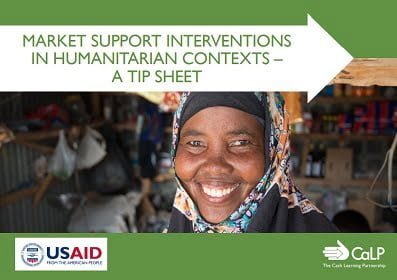
Market Support Interventions in Humanitarian Contexts – a Tip Sheet
Guidelines and Tools
This tip sheet defines what market support programming in humanitarian contexts is, and what it can look like in practice. It enables humanitarian practitioners to systematically consider market support interventions alongside other programme activities. The scope includes support interventions focusing on supply/availability and on demand/access. The tip sheet is based on secondary data...
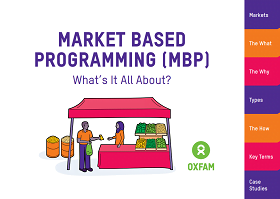
Market Based Programming (MBP)
Guidelines and Tools
Market Based Programming (MBP) in Oxfam’s work means we always consider existing markets – through assessments, analysis and programming – across all phases of a response and across all technical sectors. You can also watch the videos below which are available in English, Spanish, Arabic and French.
Thematic lead
Latest
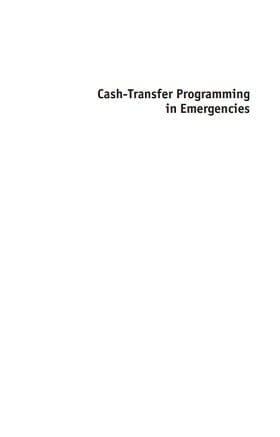
Cash-transfer programming in emergencies
Guidelines and Tools
A compact and concise guide aimed at supporting programme managers to assess whether cash is the most appropriate response in an emergency and choose between different types of cash-based interventions. This guide is based on the experience of Oxfam GB over five years (2000–2005) in a variety of...
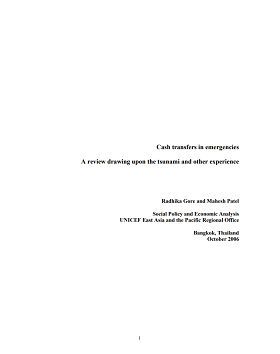
Cash Transfers in Emergencies: A Review Drawing upon the Tsunami and Other Experience
Report
This 2006 document from the Social Policy and Economic Analysis office of UNICEF (East Asia and the Pacific Region) draws upon examples from the tsunami and other contexts to explore cash transfer experience in emergencies. It presents existing evidence of impact of cash transfers on children; reasons...
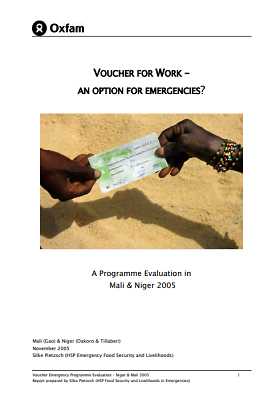
Voucher for work: An option for emergencies?
Report
This Oxfam GB evaluation report gathers successes, constraints and lessons learned during the implementation of two voucher programmes in Mali and Niger, following the food crisis in 2005. It begins by examining the appropriateness of the programme decision-making, and then looks at the two programme...

ODI/UNDP Cash Learning Project Workshop in Aceh, Indonesia
Case Study
This is a report from a workshop on sharing experiences and learning for cash-based interventions. The workshop was held in Aceh, Indonesia in July 2005. The workshop included case studies from Mercy Corps, Panglima Laot, Save the Children, British Red Cross, Swiss Development Corporation, Oxfam and...
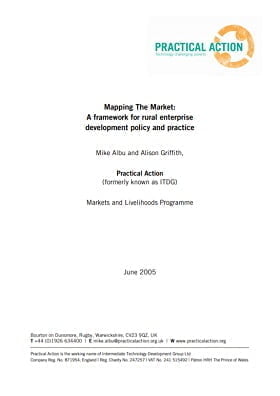
Mapping the Market: A framework for rural enterprise development policy and practice
Guidelines and Tools
Markets matter to the rural poor. It is increasingly clear that in tackling rural poverty, market-related issues – including access to information, institutions, linkages and trade rules – are vital considerations. Failure to address these issues means that the benefits of other developments...

Clients First! A Rapid Market Appraisal Tool Kit: Theoretical background and experiences from various RMA events
Guidelines and Tools
Clients First! focuses on one vital element of market research that should be carried out before deciding to support at the agricultural production side or to proceed with an agribusiness project: a market feasibility study. The publication describes the main characteristics of a basic market study as...

Seed vouchers and fairs: A manual for seed-based agricultural recovery in Africa
Guidelines and Tools
This manual describes a new (2002) approach to post-emergency seed distribution in Africa, where farmers receive not free seed but vouchers that can be exchanged for seed at a specially organized seed fair. Seed fairs rely on commercial seed firms (where they are in operation), as well as local seed...

Cash Transfers in Emergencies: Evaluating Benefits and Assessing Risks
Report
In terms of both theory and practice, there appears to be a strong case for cash-based responses to food emergencies where the supply and market conditions are appropriate. Amartya Sen’s work on entitlements offers a solid theoretical base for cash transfers, and the practical experience so far, limited...
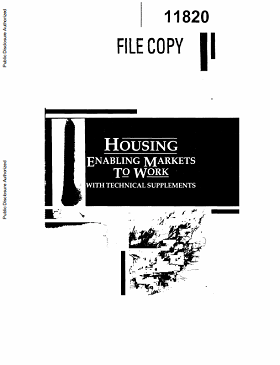
Housing: Enabling markets to work with technical supplements
Report
This policy paper discusses the evolving role of the World Bank in the housing sector and provides a new agenda for housing policy and institutional reform in developing countries. It explains the rationale for a new housing policy statement, presents a conceptual and analytical framework for...



